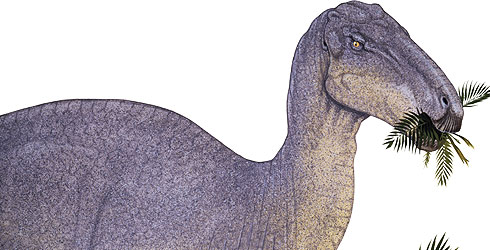Distribution
The only known specimen of Kukufeldia was found near the village of Cuckfield in West Sussex.
It comes from a geological horizon that was termed the ‘Cuckfield Stone’ by local quarrymen and that is now termed the Grinstead Clay Member of the Tunbridge Wells Sand Formation.
This deposit was laid down by a series of large rivers that meandered across a broad floodplain that covered much of what is now southern England.
Rock dating shows they were formed during the early part of the Cretaceous Period, approximately 140–136 million years ago.
Kukufeldia shared this environment with a diverse range of other land animals including:
- dinosaurs (such as its close relatives Barilium and Hypselospinus)
- crocodiles
- flying reptiles (pterosaurs)
- turtles
- early mammals
Nutrition
The grinding teeth characteristic of Kukufeldia show that it was a herbivore, which probably spent most of its day browsing on the conifer and cycad dominated vegetation that covered southern England during the Cretaceous Period.
Like its close relative Iguanodon, it probably used these teeth to grind its food to a pulp before swallowing. It may also have had the unusual jointed skull seen in its relatives. This allowed slight sideways movements of the upper jaws during chewing.
In addition to its batteries of teeth, the tip of the jaw would have been lined with a horny, turtle-like beak for cutting and ripping through plant material.
